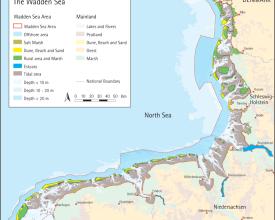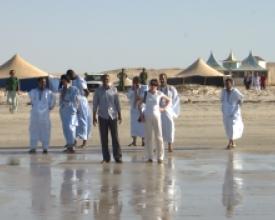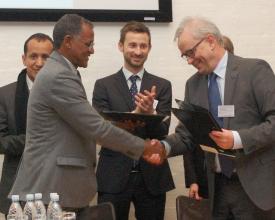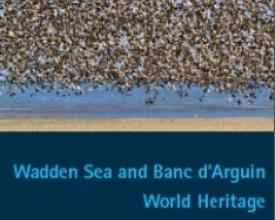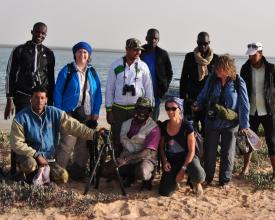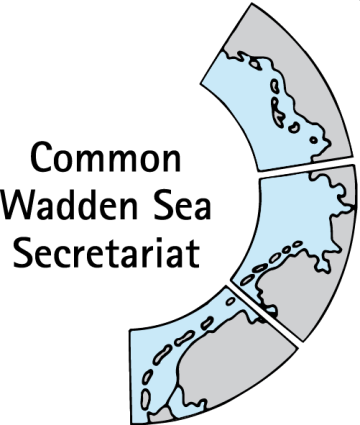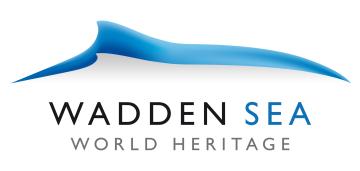
East Atlantic Flyway partnership for the conservation of tidal flat ecosystems Banc d'Arguin - Wadden Sea
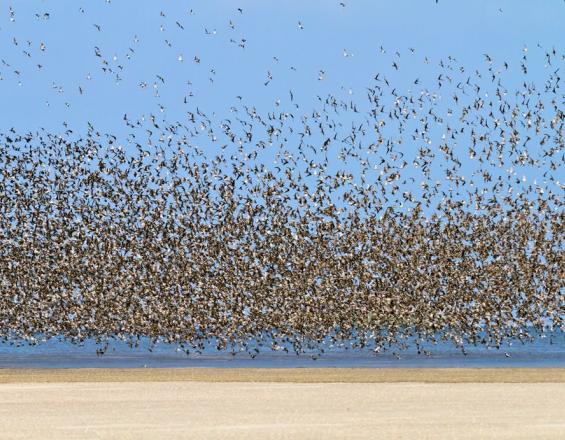
Europe’s Wadden Sea (DK, DE, NL) and Mauritania's National Park Banc d´Arguin (PNBA) — two World Heritage properties linked through the migratory birds on the African Eurasian Flyway, for which they serve as important wintering and stop over areas — signed a Memorandum of Understanding (MoU) in 2014 to protect the migratory birds. Since, there have been bilateral visits of managers and scientists, a joint action plan and cooperation in bird monitoring. More, PNBA joint the Wadden Sea Flyway Initiative, launched to strengthen waterbird conservation and monitoring along the East Atlantic flyway.
Context
Challenges addressed
-
Lack of overview of the threats and risks to migratory birds along the East Atlantic Flyway
-
Little awareness of public and policy-makers about importance of bird migration and World Heritage sites
-
No harmonized data collection methods and schedules along the East Atlantic Flyway to monitor the migratory bird population as a whole
-
Partly lack of capacity, knowledge and skills to manage the protected area of Banc d’Arguin
Location
Process
Summary of the process
All building blocks are intertwined: The MoU is the legal basis for all aspects of the cooperation. Joint communication efforts inform policy-makers, the public and stakeholders about scientific cooperation and exchange of know-how, while showing the importance of a cooperation of both sites for biodiversity. Joint scientific projects strengthen the cooperation in the fields of science and research and site management and conservation. They further create a network of stakeholders to support the MoU and generate input for communication.
Building Blocks
Memorandum of Understanding
In 2014, the Trilateral Wadden Sea Cooperation, represented by the Common Wadden Sea Secretariat, and the Banc d’Arguin National Park signed a Memorandum of Understanding (MoU) to protect the millions of birds that travel between their sites each year.
Enabling factors
Defining common issues and joint goals.
Lesson learned
The MoU is the written basis of the cooperation between the two sites and four countries with regard to nature conservation and bird life. In the framework of the MoU the Banc d’Arguin National Park joined the Wadden Sea Flyway Initiative.
Joint communication and appearance
Joint dissemination of information and joint appearance at national and international level to inform on migratory birds and their habitats in order to raise awareness on the importance of their protection. Examples are an exhibition on migratory birds at the ITB Berlin 2017 and a joint flyer.
Enabling factors
Defining common issues and joint goals.
Lesson learned
Joint communication creates broader awareness internationally.
Resources
Exchange of know-how
Regular exchange visits and exchange of know-how between experts and site managers. These meetings are means of capacity building with harmonised values and methods taught and practiced both in Banc d’Arguin and the Wadden Sea. Common monitoring and management methods are harmonized and a shared level of knowledge and understanding is created. Participants are scientists, site managers and other experts of the respective protected areas.
Enabling factors
The exchange visits of experts and managers are funded by the Trilateral Wadden Sea Cooperation and partners in the countries, e.g. the national parks. From the beginning, all partners on regional and national level of the MOU understood the advantages to enhance the conservation of their WH properties and especially migratory bird along the East Atlantic Flyway.
Lesson learned
Cultural differences lead to different understanding of nature conservation and management, e.g. the diverse views on nature conservation has to be acknowledged on both sites in order to define common goals and methods of managing the sites.
Scientific cooperation
Joint migratory bird monitoring programmes and support of common scientific and management projects to promote conservation and management of the natural resources of the Wadden Sea and Banc d’Arguin. The ambition is for the two sites to take lead in simultaneous counts along the entire East Atlantic Flyway in order to get a full picture on the status of migratory bird populations using the flyway. Research on migratory birds in the Wadden Sea and Banc d'Arguin is closely interconnected and significant for all other wintering, breeding and staging sites along the flyway. Thus, only scientific cooperation can reach a holistic perception of the flyway and a common basis for successful management.
Enabling factors
Shared research questions and similarities of nature sites.
Lesson learned
Cultural differences lead to different understanding of monitoring and scientific research, e.g. different approaches to scientific research and monitoring had to be viewed and discussed to find a common path.
Impacts
Since 2014, the MoU has provided opportunities to share knowledge and experience in the fields of conservation, management and the sustainable use of tidal flat ecosystems. Communication and awareness have been enhanced to achieve an understanding of the necessity to manage and conserve migratory birds on a global scale. Research activities have gained support. The MoU has promoted and supported cooperation among stakeholders and organizations along the flyway. Further, it has supported the implementation of the World Heritage Convention.
Beneficiaries
Local communities, indigenous people in Banc d’Arguin, national parks
Story

Effective monitoring and protection of migratory birds along a flyway cannot be done by looking at just one of the many stops along their route and needs to be viewed as a whole. Dr Jutta Leyrer from the Wadden Sea followed that holistic approach in her PhD-research on the Afro-Siberian red knot subspecies. These birds highly depend on both, the Banc d'Arguin in Mauritania as their most important wintering site, and the Wadden Sea as their central staging site during migration. Thus, Leyrer explored both sites, visiting the National Park in Mauritania frequently in 2003-2009. “During these years, I have learnt the importance of endurance”, says Leyrer: “Visiting the site frequently over a longer period has helped me establish relationships with the people on-site that are lasting to date. It showed my Mauritanian colleagues that I am committed to the exchange.”
In 2014-2015 she returned to Mauritania as an integrated expert for CIM Centre for International Migration to work with GIZ to help build up an administrative structure. At the same time, on request of UNESCO the Trilateral Wadden Sea Cooperation and the National Park Banc d’Arguin explored the idea of building up a stronger cooperation with help of a Memorandum of Understanding. Leyrer, knowing both sites and their communities well, became intermediary and essential piece on the way to the signing of the MoU in 2014.
“In my eyes, the MoU first and foremost shows commitment,” adds Leyrer: “The involved states signed a long-term pursuit of a mutually beneficial collaboration. Having a paper like this helps immensely when working on practical aspects of the exchange, especially when financial support and long-term staff resources are required. This is a major advantage over conventional, rather short-termed development projects.”
Today, Leyrer works in the Michael-Otto-Institute of the German NGO NABU (Birdlife Germany) and fosters her ties to the Wadden Sea Flyway Initiative, which aims to strengthen waterbird conservation and monitoring along the East Atlantic flyway and is intertwined with the MoU: “The MoU is definitely a first step and with it, there have been exchanges of site-managers and researchers. However, mostly these trips went one direction: from the Wadden Sea to Banc d’Arguin. Ultimately, our Mauritanian colleagues should frequently visit the Wadden Sea as well. That is a goal, I feel we still need to accomplish. But with the MoU we have the long-term perspective to reach it.”


